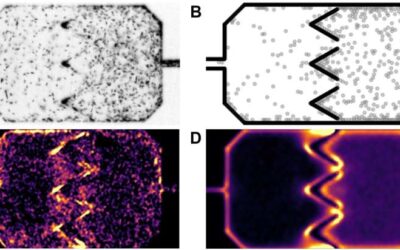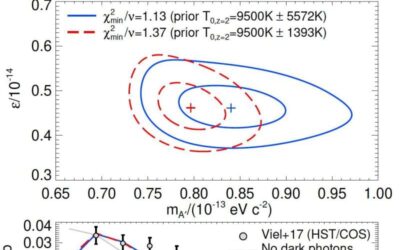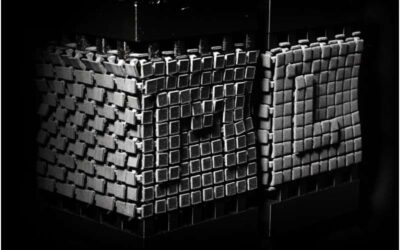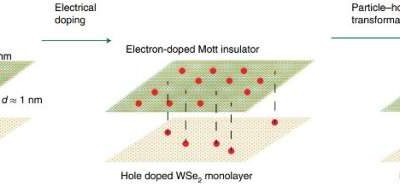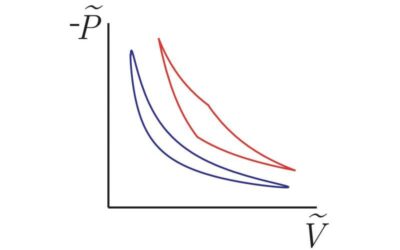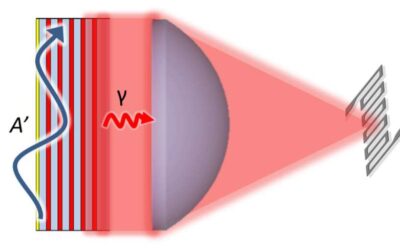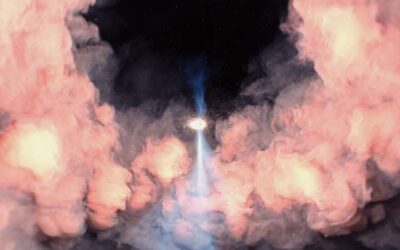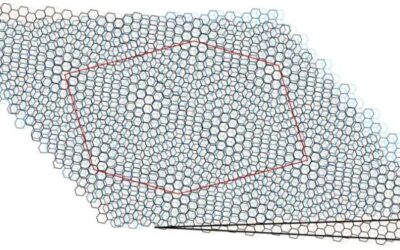In physics, equilibrium is a state in which a system's motion and internal energy do not change over time. Videos of systems in equilibrium would look exactly the same if they were watched in their normal chronological progression or backwards. This symmetry means...
General Physics
Study explores the possibility that dark photons might be a heat source for intergalactic gas
Gas clouds across the universe are known to absorb the light produced by distant massive celestial objects, known as quasars. This light manifests as the so-called Lyman alpha forest, a dense structure composed of absorption lines that can be observed using...
Using machine learning to infer rules for designing complex mechanical metamaterials
Mechanical metamaterials are sophisticated artificial structures with mechanical properties that are driven by their structure, rather than their composition. While these structures have proved to be very promising for the development of new technologies designing...
Physics study shows that sheep flocks alternate their leader and achieve collective intelligence
The collective motion of animals in a group is a fascinating topic of research for many scientists. Understanding these collective behaviors can sometimes inspire the development of strategies for promoting positive social change, as well as technologies that emulate...
Recent searches for light fermionic dark matter by the PandaX-4T collaboration
Teams of astrophysicists worldwide are trying to observe different possible types of dark matter (DM), hypothetical matter in the universe that does not emit, absorb or reflect light and would thus be very difficult to detect. Fermionic DM, however, which would be...
Evidence of excitonic insulators in moiré superlattices
Excitons are quasiparticles that are formed in insulators or semiconductors when an electron is promoted to a higher energy band, leaving a positively charged hole behind.
Using thermodynamic geometry to optimize microscopic finite-time heat engines
Stochastic thermodynamics is an emerging area of physics aimed at better understanding and interpreting thermodynamic concepts away from equilibrium. Over the past few years, findings in these fields have revolutionized the general understanding of different...
Study sets new constraints on dark photons using a new dielectric optical haloscope
Researchers at the National Institute of Standards and Technology (NIST), Massachusetts Institute of Technology (MIT) and the Perimeter Institute recently set new constraints on dark photons, which are hypothetical particles and renowned dark matter candidates. Their...
Study identifies a tidal disruption event that coincides with the production of a high-energy neutrino
High-energy neutrinos are highly fascinating subatomic particles produced when very fast charged particles collide with other particles or photons. IceCube, a renowned neutrino detector located at the South Pole, has been detecting extragalactic high-energy neutrinos...
The direct detection of a topological phase transition through a sign change in the Berry curvature dipole
The Berry curvature and Chern number are crucial topological qualities of a quantum mechanical origin characterizing the electron wave function of materials. These two elements play a very important role in determining the properties of specific materials.

